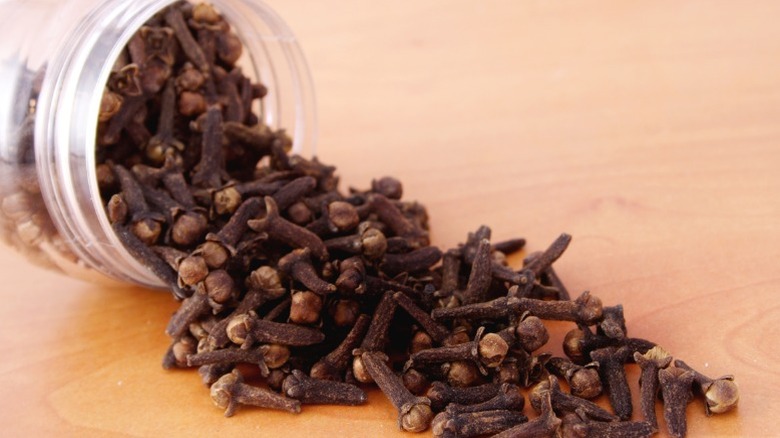Studding Your Ham Before Cooking Isn't The Hack You Think It Is
When you get a beautiful ham for a holiday, whether that's Christmas or Easter, you want to treat it right and avoid making any mistakes. It may seem more low-maintenance than a turkey — after all, most hams you buy at the supermarket have already been cooked, so you just have to warm them in the oven — but you still have to apply the glaze, tent it with foil so it doesn't bake uncovered, and maybe pour some hot water into the tray. You may or may not have gone to the trouble of studding your ham with cloves before, and it might seem like a tempting option. You want your dinner to be special, after all, and what could be more impressive than making your ham look like you spent hours in the kitchen perfecting its deliciousness? But if you've never done it before, there's no real reason to start now: It's a neat presentation choice, but not much more.
We talked to Geoffrey Zakarian, the chef behind City Harvest, in advance of the charity's upcoming gala, and asked him about studding ham. While he said that "it's a nice look," Zakarian also warned that the flavor of those cloves don't penetrate very deep. "So when you slice the ham, if you're going to use the clove, then you need to give a piece of fat with each ham slice. You have to cut it so that it's fat underneath the slice. Otherwise, it's a waste of time and cloves. Know what I mean? It's not going to penetrate that huge ham." He also suggested taking the cloves out before serving, noting, "If someone chews on a clove they'll never come to your house again. It's not a pleasant thing."
Use a clove powder to lend deeper flavor to your ham
Chef Geoffrey Zakarian agrees that cloves go well with ham. "I love the flavor of clove for a ham, but you really have to caramelize the fat. Once you get that fat caramelized, then the clove does its job because it has its own oil that mixes with the fat of the ham, and it's quite lovely. But just on the surface. You've got to be careful, cloves are very strong." Cloves can be a great addition, but the studding method, while pretty, is far from the most efficient way to flavor your ham — especially considering how expensive cloves can be.
Instead, Zakarian recommends crushing cloves into a powder and applying that to your ham with salt and pepper. But if you're after precise measurements, he may have to disappoint you. The chef claims he never seasons with any kind of measurement unless he's baking. "I just season it so it's completely covered. You have to season with authority," he said. It's a thorough, efficient, and tasty way of giving your ham a richer, more lively flavor — just be sure not to skimp on the seasoning.

